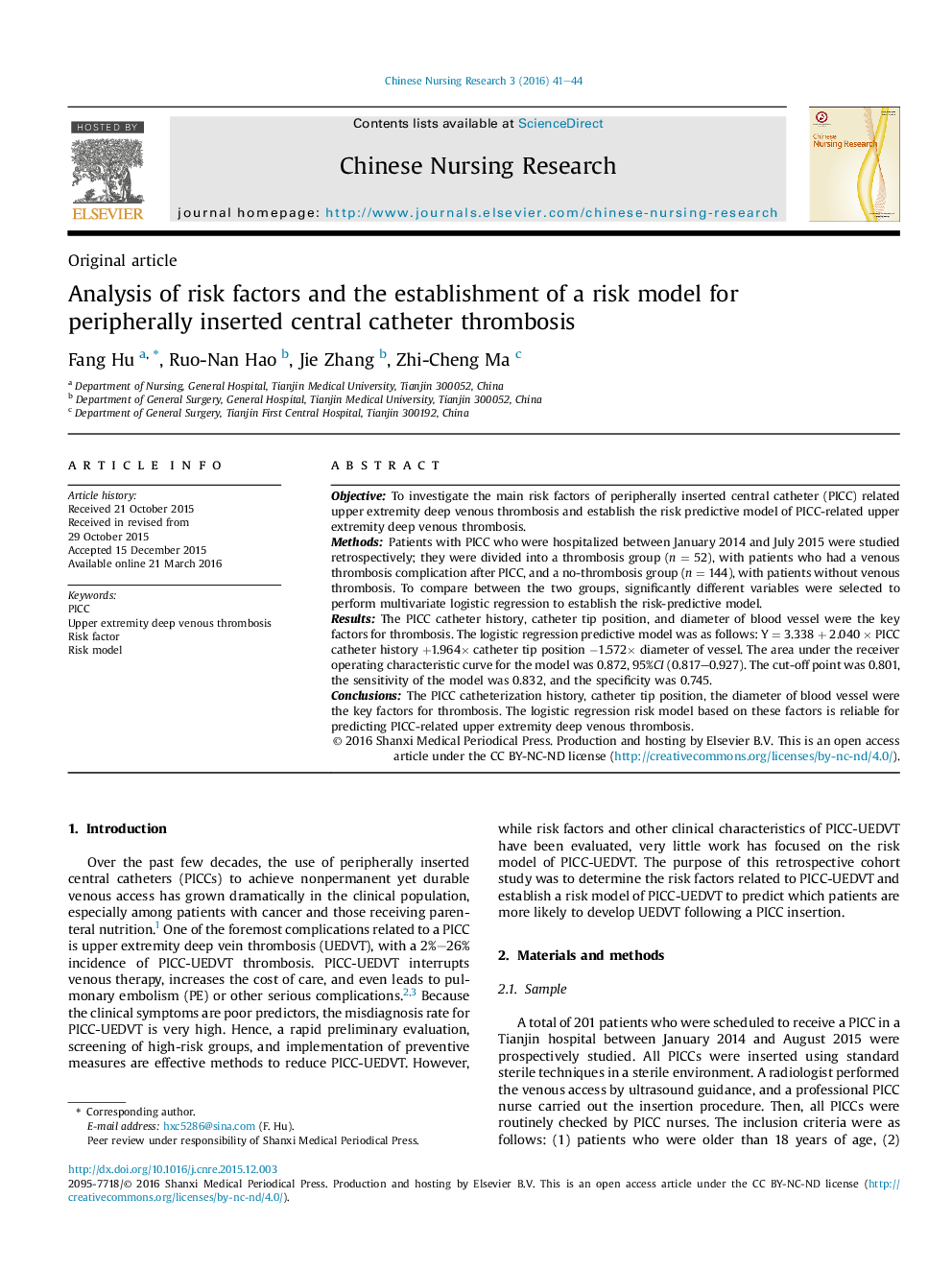| Article ID | Journal | Published Year | Pages | File Type |
|---|---|---|---|---|
| 2645614 | Chinese Nursing Research | 2016 | 4 Pages |
ObjectiveTo investigate the main risk factors of peripherally inserted central catheter (PICC) related upper extremity deep venous thrombosis and establish the risk predictive model of PICC-related upper extremity deep venous thrombosis.MethodsPatients with PICC who were hospitalized between January 2014 and July 2015 were studied retrospectively; they were divided into a thrombosis group (n = 52), with patients who had a venous thrombosis complication after PICC, and a no-thrombosis group (n = 144), with patients without venous thrombosis. To compare between the two groups, significantly different variables were selected to perform multivariate logistic regression to establish the risk-predictive model.ResultsThe PICC catheter history, catheter tip position, and diameter of blood vessel were the key factors for thrombosis. The logistic regression predictive model was as follows: Y = 3.338 + 2.040 × PICC catheter history +1.964× catheter tip position −1.572× diameter of vessel. The area under the receiver operating characteristic curve for the model was 0.872, 95%CI (0.817–0.927). The cut-off point was 0.801, the sensitivity of the model was 0.832, and the specificity was 0.745.ConclusionsThe PICC catheterization history, catheter tip position, the diameter of blood vessel were the key factors for thrombosis. The logistic regression risk model based on these factors is reliable for predicting PICC-related upper extremity deep venous thrombosis.
